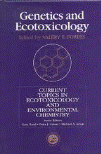Papers in the Biological Sciences
Date of this Version
9-2005
Citation
Aquatic Toxicology 74:4 (September 30, 2005), pp. 307–319; doi:10.1016/j.aquatox.2005.06.002
Abstract
The polychaete Capitella capitata consists of a species complex within which differences in tolerance to toxicants have been observed. For example, it has been shown that Capitella sp. S is more sensitive (e.g., in terms of survival, growth and reproduction) to PAH and other stressors than the more opportunistic Capitella sp. I, which is able to take up and biotransform the PAH fluoranthene (Flu). In the present study, an investigation was performed to examine whether differences in tolerance between Capitella species sp. I and sp. S are due to differences in biotransformation, measured as the amount of Flu-metabolites produced by worms. We exposed both sibling species to sediment contaminated with 21 and 26 μg Flu/g dry weight sed for 10–15 days. We found that Capitella sp. I took up more Flu from the sediment than sp. S (346 μg Flu eq./g dry weight worm versus 219 μg Flu eq./g dry weight worm, respectively), but as sp. I was much more effective at biotransforming this PAH (62% versus 11%, respectively of total Flu), the net amounts of parent Flu accumulated by the two species were similar. We found significant differences in the subcellular distribution of Flu and its metabolites between sibling species, with sp. I accumulating mostly in the cytosol and sp. S accumulating mostly in the membrane fraction. A previous study by our group showed Flu to be genotoxic to sp. I upon biotransformation. In the present study, we found no detectable genotoxicity in sp. S following Flu exposure. Our results demonstrate that DNA damage is tightly coupled to biotransformation ability and that other aspects of PAH toxicity (e.g., membrane disruption) are more relevant than DNA damage for predicting tolerance differences between these species.
Included in
Aquaculture and Fisheries Commons, Terrestrial and Aquatic Ecology Commons, Toxicology Commons


Comments
Copyright © 2005 Elsevier B.V. Used by permission.